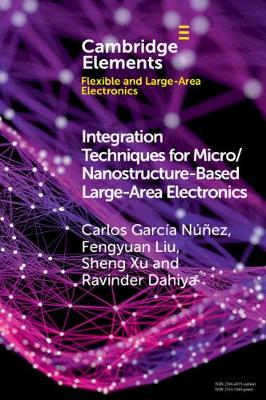Elements in Flexible and Large-Area Electronics
2 total works
1D Semiconducting Nanostructures for Flexible and Large-Area Electronics
by Dhayalan Shakthivel, Muhammad Ahmad, Mohammad R. Alenezi, Ravinder Dahiya, and S. Ravi P. Silva
Published 21 October 2019
Semiconducting nanostructures such as nanowires (NWs) have been used as building blocks for various types of sensors, energy storage and generation devices, electronic devices and for new manufacturing methods involving printed NWs. The response of these sensing/energy/electronic components and the new fabrication methods depends very much on the quality of NWs and for this reason it is important to understand the growth mechanism of 1D semiconducting nanostructures. This is also important to understand the compatibility of NW growth steps and tools used in the process with these unconventional substrates such as plastic that are used in flexible and large area electronics. Therefore, this Element presents at length discussion about the growth mechanisms, growth conditions and the tools used for the synthesis of NWs. Although NWs from Si, ZnO and carbon nanotubes (CNTs) are included, the discussion is generic and relevant to several other types of NWs as well as heterostructures.
Integration Techniques for Micro/Nanostructure-based Large-Area Electronics
by Carlos Garcia Nunez, Fengyuan Liu, Sheng Xu, and Ravinder Dahiya
Published 1 November 2018
Advanced nanostructured materials such as organic and inorganic micro/nanostructures are excellent building blocks for electronics, optoelectronics, sensing, and photovoltaics because of their high-crystallinity, long aspect-ratio, high surface-to-volume ratio, and low dimensionality. However, their assembly over large areas and integration in functional circuits are a matter of intensive investigation. This Element provides detailed description of various technologies to realize micro/nanostructures based large-area electronics (LAE) devices on rigid or flexible/stretchable substrates. The first section of this Element provides an introduction to the state-of-the-art integration techniques used to fabricate LAE devices based on different kind of micro/nanostructures. The second section describes inorganic and organic micro/nanostructures, including most common and promising synthesis procedures. In the third section,different techniques are explained that have great potential for integration of micro/nanostructures over large areas. Finally, the fourth section summarizes important remarks about LAE devices based on micro/nanostructures, and future directions.

